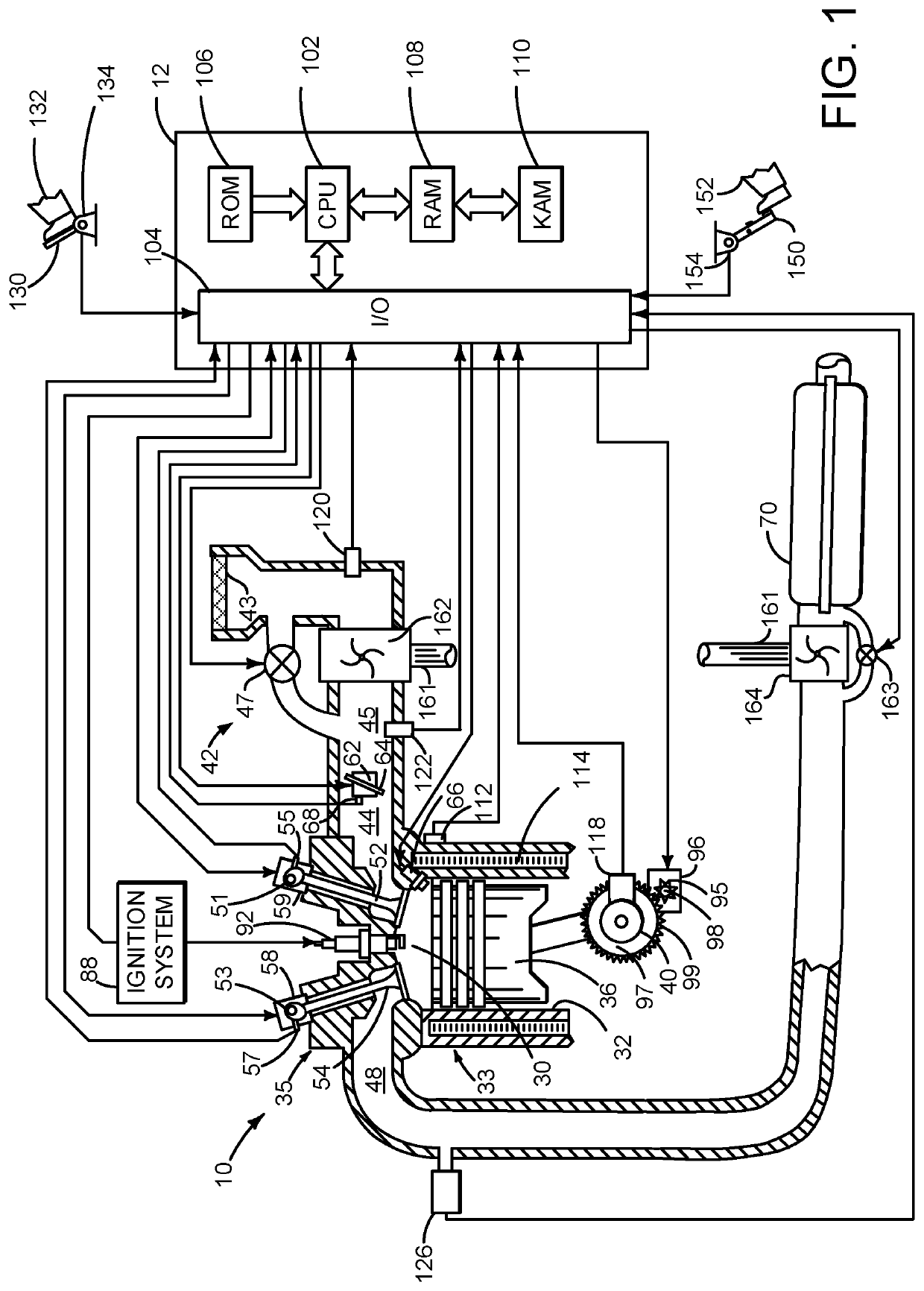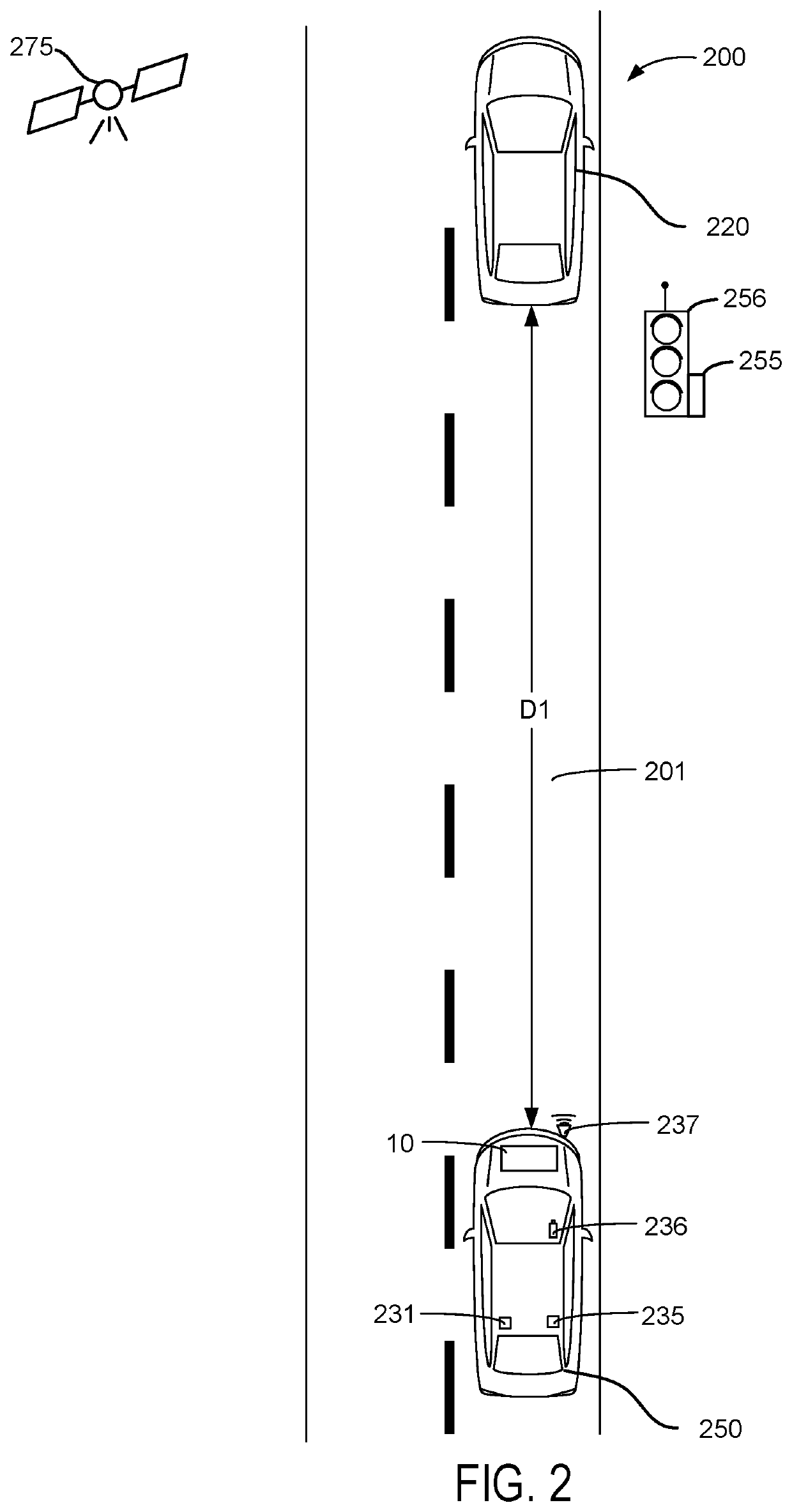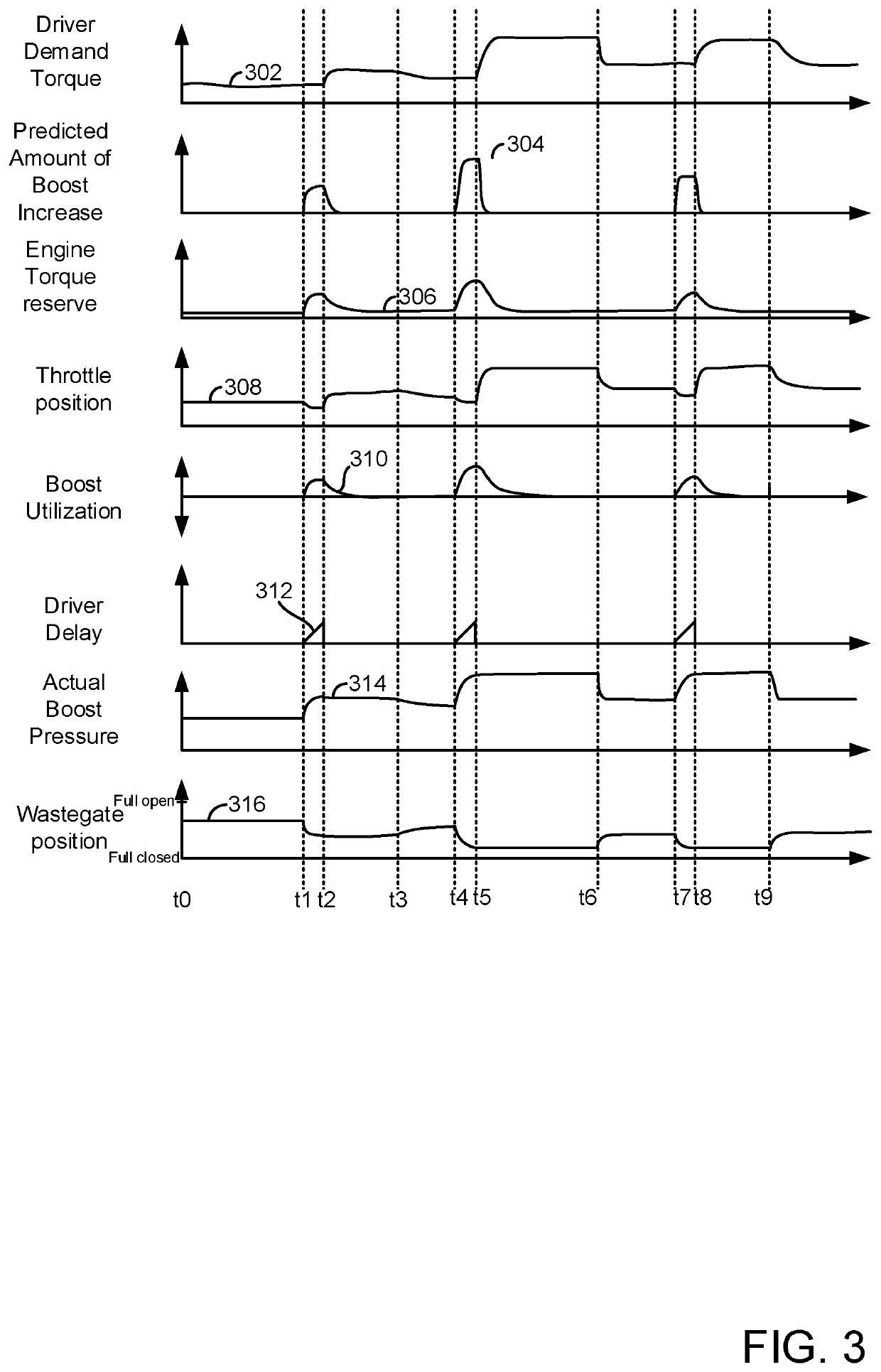Method and system for providing boost to an internal combustion engine
a technology of internal combustion engine and boost system, which is applied in the direction of machines/engines, electric control, transportation and packaging, etc., can solve the problems of engine and vehicle not responding as quickly as is desired by the human driver, the driver may not increase the boost as fast, and the supercharger response may also be delayed, so as to increase the driver's demand torque or requested vehicle acceleration even more, increase the vehicle fuel consumption and emissions, and increase the acceleration
- Summary
- Abstract
- Description
- Claims
- Application Information
AI Technical Summary
Benefits of technology
Problems solved by technology
Method used
Image
Examples
Embodiment Construction
[0014]The present description is related to generating boost within an internal combustion engine. Boost is generated before it is demanded so that engine torque production lag may be reduced. In one example, boost may be increased in response to road conditions that may provide impetus to a human driver to increase a driver demand torque or a vehicle acceleration request. The boost may be generated in an engine as is shown in FIG. 1. The engine of FIG. 1 may be included in a vehicle as is shown in FIG. 2. The engine and vehicle may operate as is shown in the sequence of FIG. 3. Driver demand delay relative to a change in road conditions and the evolution of boost pressures in an engine are shown in the plot of FIG. 4. A flowchart of a method for generating boost within an engine is shown in FIG. 5.
[0015]Referring to FIG. 1, internal combustion engine 10, comprising a plurality of cylinders, one cylinder of which is shown in FIG. 1, is controlled by electronic engine controller 12. ...
PUM
 Login to view more
Login to view more Abstract
Description
Claims
Application Information
 Login to view more
Login to view more - R&D Engineer
- R&D Manager
- IP Professional
- Industry Leading Data Capabilities
- Powerful AI technology
- Patent DNA Extraction
Browse by: Latest US Patents, China's latest patents, Technical Efficacy Thesaurus, Application Domain, Technology Topic.
© 2024 PatSnap. All rights reserved.Legal|Privacy policy|Modern Slavery Act Transparency Statement|Sitemap



